The NATO alliance—now 29 members strong after Montenegro joined on June 5—is at the center of renewed debates over the future of European security. NATO’s pivotal role in Eastern Europe has taken on new importance for several reasons. There is the ongoing Russian intervention in eastern Ukraine, which has left over 10,000 Ukrainians dead, and the status of Russia’s 2014 annexation of Crimea remains unresolved. There is also the issue of worsening U.S.-Russia relations, which have reached a new low following President Putin’s requirement that the American and Russian staff at the U.S. embassy in Moscow be reduced by 755 people, as a response to renewed U.S. sanctions. And there are uncertain messages coming from the White House, with President Trump’s initial reluctance to endorse NATO’s mutual defense clause (he finally did on June 9). For these reasons, and many more, questions have arisen about the status quo in Eastern Europe.
In this context, the Center for 21st Century Security and Intelligence at Brookings hosted an event recently featuring Senior Fellows Michael O’Hanlon and Steven Pifer to discuss the future of European security. Both O’Hanlon and Pifer have completed compelling and persuasive books that delve into Europe’s security architecture. O’Hanlon’s book, a Marshall Paper titled “Beyond NATO: A New Security Architecture for Eastern Europe,” questions the value of future NATO expansion amidst what is arguably the most consequential security issue facing the United States today: increasing hostility with Russia, which if not addressed effectively, could spiral into open conflict. Pifer, in “The Eagle and The Trident: US—Ukraine Relations in Turbulent Times,” provides insight on the evolution of the European security order through a comprehensive account of Ukraine’s trajectory from a newly independent state in 1991 to the present day.
In a conversation that I moderated, the two debated the motivating factors behind President Putin’s revisionist strategies in Eastern Europe and next steps for the United States and NATO to reduce the possibility of escalating conflict.
A New Model for European Security
O’Hanlon outlined his proposal to lower tensions with Russia: a permanent zone of neutrality in which the currently non-aligned states—Finland, Sweden, Georgia, Ukraine, Moldova, Belarus, Armenia, Azerbaijan, Cyprus, and Serbia (and perhaps other neutral Balkan countries)—will never join NATO or a Russian equivalent.
In exchange for a halt to all future NATO expansion, the agreement would demand that Russia “keep its hands off” the neutral countries, in O’Hanlon’s words, reach fair agreements on existing territorial disputes, and acknowledge these nations’ right to join institutions such as the European Union. If Russia reneges on its end of the bargain, O’Hanlon argues that little would be lost: The West could enact an even tougher stance against Russia and reopen the possibility of NATO membership for the neutral countries.
O’Hanlon also cited the benefits of this agreement for NATO member states. Halting expansion would prompt a reassessment of Article 10 of the 1949 Treaty, which allows for the consideration of new member states. In the post-Cold War era, NATO’s focus should not be “inherently about enlargement,” according to O’Hanlon. Instead, alliances should be formed strategically and “at specific moments in time for specific reasons.”
Moreover, such an agreement would reinforce the credibility and integrity of NATO’s Article 5, which commits all member states to view an attack against one member as an attack against all. Extending NATO membership and Article 5 protection to “countries that it’s not really clear we’re prepared to fight for,” O’Hanlon said, calls the alliance’s credibility into question. Indicating clearly that NATO does not support expansion purely for the sake of expansion would help resolve this issue.
For Putin, this agreement would provide a useful domestic narrative: He could claim to be the Russian leader who stopped NATO from continuing its eastward push. Since the end of the Cold War, NATO has expanded to Russia’s borders—despite the lack of Soviet threat to justify several rounds of enlargement. O’Hanlon argues that NATO’s purported military threat may be more of a psychological insult to Russians than a real security worry—nonetheless, it is portrayed as both in Russian politics today.
Pifer agreed with O’Hanlon on several points, among them that the European security order is broken and that NATO is not prepared at present to put states like Georgia and Ukraine on a membership track. These countries should, rather than pushing NATO for Membership Action Plans (MAPs), focus on implementing domestic reforms to improve good governance, achieve economic stability and build strong militaries, which would bolster their ability to solve territorial disputes with Russia and position themselves as stronger candidates if or when NATO later reconsiders enlargement to its east.
Although he commended O’Hanlon for proposing a solution, Pifer contended the model would not work in practice. Under the 1975 Helsinki Final Act, all countries have a right to choose their own orientation—and, Pifer argued, most countries would object to being put into O’Hanlon’s proposed neutral zone. These states include Ukraine and Georgia, but also countries like Sweden and Finland, where domestic support for NATO has increased in recent years.
Pifer also expressed misgivings about Russia’s willingness to respect the deal. Although the West might uphold the zone’s neutrality, Pifer speculated that Russia would not. Instead, Putin would continue to use economic and political leverage to establish a sphere of influence, especially in states with ethnic Russian minorities or in regions such as Crimea that Putin claims as Russian territory. Pifer also argued that for the Kremlin, EU expansion is just as threatening as NATO expansion, as the two have often gone hand-in-hand. Thus, the Kremlin is as likely to oppose EU membership for these countries as it would oppose NATO membership.
European Security and China
I asked the two about European security in relation to China, given Russia and China’s enhanced cooperation in their energy sectors, military operations, and intelligence sharing. Just last month, the two countries carried out an unprecedented military exercise in the Baltic Sea. Despite longstanding distrust between the two nations, could a stronger Russia-China relationship further challenge European security?
O’Hanlon and Pifer largely agreed that a scenario in which Russia and China partner against “everyone else” is unlikely. Although the Russia-China relationship could certainly be expanded, there is little benefit to China of further allying with Russia at the expense of its relationship, particularly through trade and investment, with the West. First, Russia does not have a large enough market to accommodate Chinese exports; trade between Russia and China is significantly smaller than China’s trade with Europe and the United States. Second, whereas China is on the rise, Russia is a power in decline.
President Xi Jinping therefore does not see Russia as a development model to replicate or as a partner to cultivate. And although there might be some incentive to cooperate in certain areas, there remains a high level of unease between the two countries. Lastly, China has focused significant resources on engagement in Central Asia—“Russia’s backyard,” in Pifer’s words. He speculated that “there’s going to be a certain nervousness in Moscow about just how much China is penetrating that area… and my guess is at some point there is going to be some friction.” Overall, a Russia-China partnership, for now, is unlikely to challenge Europe’s security architecture.
Will There be a Grand Bargain?
O’Hanlon’s proposal is contentious and could entail significant consequences for the currently neutral states living in Russia’s shadow. Yet former U.S. Secretary of Defense Bill Perry’s endorsement of O’Hanlon’s book captures the fundamental issue at hand: lowering tensions that stoke hostility between the United States and Russia. Perry wrote, “This is a controversial proposal, and one with real drawbacks for the nations involved. But the problem has eluded other solutions, and the consequences of not solving it could be catastrophic.”
It is my opinion that it would be better to negotiate a new security architecture that benefits Eastern Europe after Putin exits the political stage and the United States has a president more committed to European prosperity and stability. However, now is the time to discuss creative and bold ideas, such as O’Hanlon’s, for a future moment when such progress is possible.
Rachel Rodgers contributed to this post.
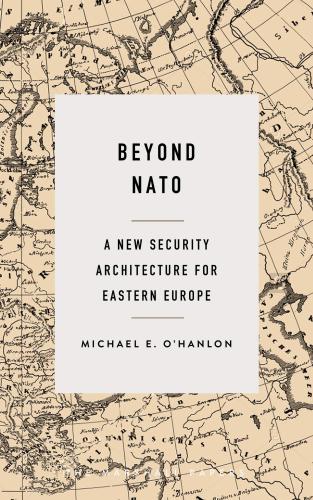
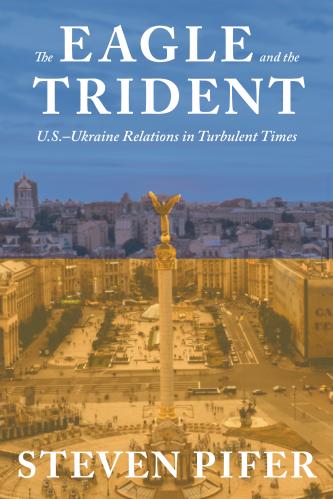
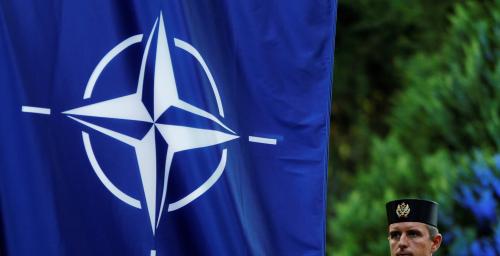
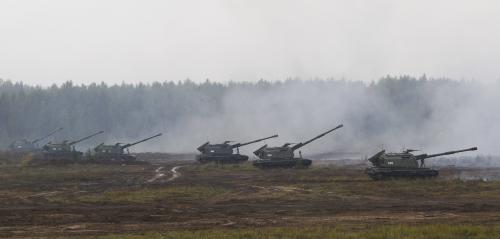
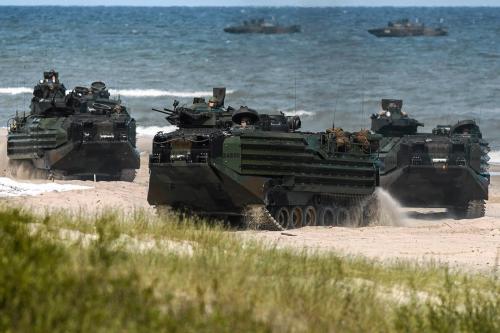

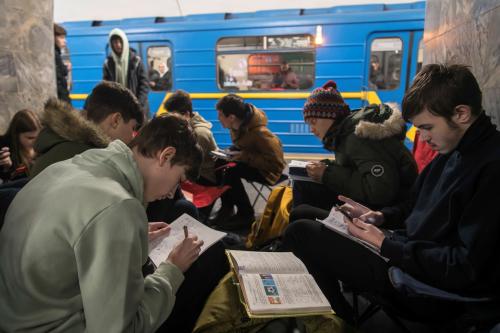


Commentary
NATO at a crossroads: Experts offer bold ideas for enhancing Eastern European security
August 15, 2017